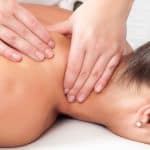 Want to earn continuing education credit for this article? Learn more.
Want to earn continuing education credit for this article? Learn more.
A therapist’s hands are treasured tools that are re-used on each and every client. As such, keeping their hands germ-free is crucial to prevent the spread of disease. As instructed in universal precautions, thorough hand washing before and after each client is essential. However, a busy practice or a desire to save time or resources can easily result in practitioners taking shortcuts.
Hands and Nails
According to the U.S. Centers for Disease Control (CDC), keeping hands clean through hand hygiene is the most important step we can take to avoid getting sick and spreading germs to others. Hand and nail care is especially important to bodyworkers, as their hands represent the contact between client and therapist. Per universal precautions, the following practices must be adhered to. Therapists should:
- ensure that there is no broken skin on their hands or on the skin of the client.
- cover any broken skin with a non-absorbent covering or wear protective gloves during the treatment.
- tend to their fingernails, cutting them short and keeping them free from any dirt or foreign matter.
- avoid hand jewelry, acrylic nails or chipped nail polish, as these may provide crevices in which microorganisms can persist after routine hand washing.
- thoroughly and correctly wash their hands before and after significant contact with clients, after engaging in any activity likely to cause contamination and after the removal of gloves.
Straying from Hand Washing Procedure
Despite the apparent clarity of universal precautions, there are a handful of common ways that massage therapists skip steps. Usually in order to save time, water or materials, these slight slips in hygiene adherence are easy to fall into:
- Turning the water faucet on and off with the bare hand – which re-contaminates freshly cleaned hands.
- Using a bar of soap to cleanse hands instead of liquid cleanser – a bar of soap serves to repeatedly contaminate hands.
- Trying to make hand sanitizer last longer by using a small drop to “sanitize” hands – an insufficient amount.
- Failing to properly dry hands – completely with a towel or until the sanitizer evaporates – before touching the next client.
- Saving trees by re-using a paper towel throughout the day to dry hands, or drying the hands on the same cloth towel.
Hand Washing
Hand washing is the single most effective method to reduce the transmission of microorganisms from therapist to client. The procedure for correct hand washing involves the following:
- wetting the hands thoroughly with water
- applying a mild pH neutral liquid detergent
- rubbing the hands to build up a vigorous lather on all aspects of the hands, including the palms, back of hands, wrists, between the fingers and thumbs under the fingernails and up the forearms to the elbows – for at least 15 seconds
- washing off the lather in running water
- turning off the tap with the elbows, feet or fresh paper towel to prevent re-contamination
- patting hands dry with a clean towel – paper or cloth
- extending the lather time to one minute if hands are visibly contaminated with blood or other body fluids
Hand Sanitizers
Instead of washing with soap and water, the CDC has determined that healthcare workers can also use alcohol-based hand sanitizers as a suitable alternative. In fast-paced spas or busy massage practices, these hand sanitizers save a trip to the sink and have therefore become an increasingly popular tool for bodyworkers. When using hand sanitizer instead of washing with soap and water, the following guidelines are important:
- Use enough product; about 5ml or the size of a dime and spread it all over surfaces of both hands.
- Continually rub the hands together until dry. If the sanitizer dries in less than 30 seconds, not enough was used and the process should be repeated.
- If hands are visibly soiled, hand washing with a pH neutral liquid soap and water should replace using a hand sanitizer.
- Antimicrobial sanitizing wipes are not as effective as the gel and should not be considered a viable alternative.
Despite their acceptance by the CDC, a Food and Drug Administration (FDA) initiative released in April of 2011 has spurred confusion about the effectiveness of hand sanitizers. According to Deborah Autor, FDA compliance director, “FDA has not approved any products claiming to prevent infection from MRSA, E. coli, Salmonella, or H1N1 flu, which a consumer can just walk into a store and buy. These products give consumers a false sense of protection.” While there is no doubt that alcohol-based hand sanitizers can significantly reduce pathogens on the hands, it appears to be second-best to hand washing with soap and water.
Bridging the how and why of universal precautions with implementing them into a busy, hectic massage therapy practice is not always easy. The reality of clients scheduled back-to-back, strict time restraints on sessions, trimming a business budget and being environmentally conscious all lend themselves to cutting corners on keeping hands germ-free. But hands that are not thoroughly cleaned between clients are the best vehicle for transporting any of thousands of microscopic pathogens from one person to another. In committing themselves to doing no harm to their clients, all bodyworkers are urged to prioritize hand washing – by making sure they don’t cut any corners on the cleaning, scrubbing and drying necessary to yield clean hands.
Earn continuing education credit for this article contained in our Infection Control – Bacteria series. Click here to enroll.
Recommended Study:
Universal and Standard Precautions















